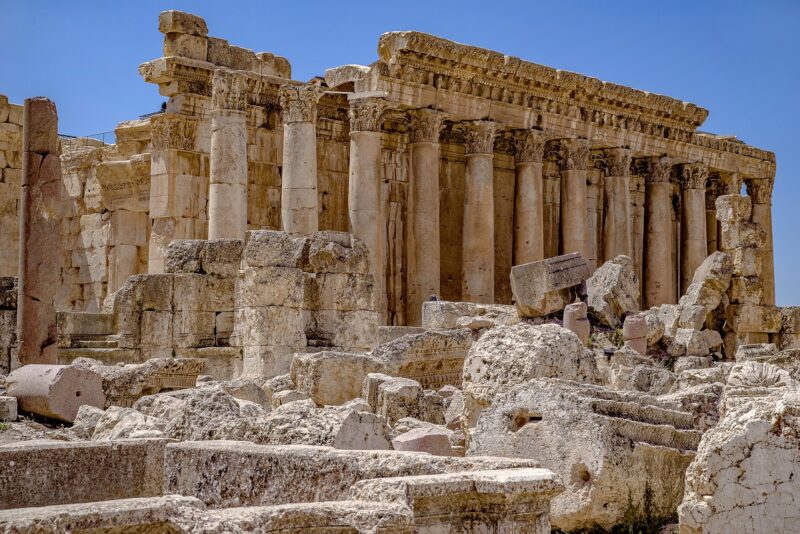Why the World’s Oldest Trees Hold the Secrets to Climate Change and the History of Human Civilization
November 17, 2024

The trees that have stood for centuries, silently witnessing the rise and fall of civilizations, are not mere marvels of nature; they are living chronicles that hold vital information about our planet’s history and its changing climate. Ancient trees, often referred to as ‘witness trees,’ are revered not only for their spectacular girth and age but also for the secrets they keep. In this article, we will delve into the significance of these trees in relation to climate change and how they provide insights into the history of human civilization.
1. Understanding Old Trees: Nature’s Time Machines
Old trees like the Great Basin bristlecone pines, some over 5,000 years old, are effectively nature’s time machines. Their rings tell stories of climatic conditions during their lifetime. Each ring corresponds to a year of growth, revealing decades, and in some cases, millennia of environmental history.
Scientists analyze these growth rings to trace historical climate patterns, including episodes of drought, fire, and temperature fluctuations. Recent research has unearthed that these trees have survived periods of extreme climate, providing invaluable data on how ecosystems have responded and adapted over time.
This knowledge is crucial, as we stand at the precipice of significant climate challenges. Understanding how ancient trees thrived in the past can inform our strategies for sustainable living and conservation today.
2. The Resilience of Ancient Trees in a Changing Climate
Ancient trees offer a unique perspective on resilience. Many have survived adaptation strategies through drastic changes in their environment, including shifts in rainfall patterns or surges in temperature. Their ability to endure such changes is a testament to nature’s remarkable adaptability.
For instance, the mighty sequoias of California have thrived for over 3,000 years. They are not only resilient but also integral to their ecosystems, providing habitats for countless species and reducing carbon dioxide levels through photosynthesis. As climate change increasingly threatens our natural world, studying these resilient species can yield critical insights into restorative ecological practices.
Moreover, ancient trees often serve as indicators of ecological stability. Their preservation can be a measure of the overall health of their environment, highlighting the relationship between ancient life and modern climate resilience.
3. Tree Rings and Climate Science: A Historical Perspective
Tree-ring dendrochronology is a scientific technique that uses the growth rings of trees to reconstruct past climate conditions. By studying these rings, scientists can analyze historical climate data back thousands of years, creating a detailed archive of our planet’s climatic shifts.
This method not only enhances our understanding of climate dynamics but also helps us predict future impacts. For example, the correlation between tree-ring data and temperature records has enabled researchers to create climate models that predict how current and future climate changes may impact ecosystems, agriculture, and even human health.
Additionally, this detailed climatic history recorded in tree rings provides a temporal backdrop for understanding human civilization. By correlating tree-ring data with archaeological findings, researchers can see how ancient populations adapted to climatic conditions—enriching our understanding of human resilience and societal development.
4. Cultural and Historical Significance of Ancient Trees
Beyond their ecological importance, ancient trees have profound cultural and historical significance. Many civilizations have revered these giants as sacred entities, using them in folklore and traditions.
For instance, the Bodhi Tree in India is a focal point of reverence where Siddhartha Gautama attained enlightenment and became the Buddha. Trees like this not only mark significant human milestones but also reflect our deep connection to nature over generations.
Throughout history, ancient trees have provided resources, such as timber and food, while also serving as gathering places for communities. Understanding their role in society can enrich our awareness of how intertwined human civilization is with natural environments. It also amplifies the urgency of conserving these primordial beings as living symbols of our shared heritage.
5. Conservation: Protecting Our Ancient Allies
As global temperatures rise and deforestation accelerates, the importance of conserving ancient trees cannot be overstated. Protecting these trees is not just about preserving biodiversity, but it is also tied to our fight against climate change. Ancient forests capture vast amounts of carbon dioxide, thus playing a pivotal role in carbon sequestration.
However, conservation efforts face significant challenges. Many ancient trees are threatened by logging, urbanization, and changes in land use. This makes it imperative for local communities, conservationists, and governments to work collaboratively to create strategies for protecting these vital organisms.
Initiatives such as establishing protected areas, promoting sustainable forestry practices, and supporting restoration projects can play a crucial role in ensuring the longevity of these trees for future generations. Collaborative partnerships often yield the best results in enhancing awareness and promoting conservation.
Conclusion: Lessons from the Ancients
The world’s oldest trees stand as sentinels of history and ecology—living witnesses capable of revealing the intricate relationship between climate change and human civilization. Understanding the stories they tell not only influences our environmental strategies but also amplifies our cultural narratives.
As we traverse the complexities of climate change, these ancient beings impart crucial lessons on adaptability, resilience, and interconnectedness. By honoring and protecting these magnificent entities, we care not only for a vibrant ecosystem but also for the rich tapestry of human history that they symbolize.
The next time you encounter a gnarled branch or a sprawling root system of an ancient tree, remember: it holds stories of resilience, survival, and the secrets that could guide our planet towards a sustainable future.







